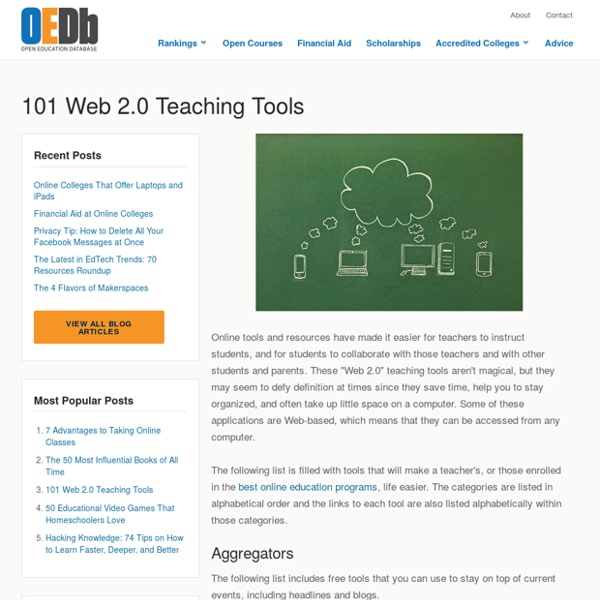20 Fun Free Tools for Interactive Classroom Collaboration
The 2014 Gates Foundation report, Teachers Know Best: What Educators Want from Digital Instructional Tools, indicates that teachers want tools “supporting student collaboration and providing interactive experiences”. This doesn’t come as a big surprise since these types of tools are fun and engaging. They also support 21st century skills like collaboration, communication, and creativity. You know what else teachers like? Good quality tools that are free! And why not?
25 Easy Ways to Use Technology in the Classroom
Although many technology-based teaching methods and resources effectively engage students and build their skills, many educators encounter difficulties when using technology in the classroom. Maybe a specific platform is too hard to introduce. Or maybe it won’t run on your devices. Despite the challenges, you likely want to enjoy the benefits that education technology can deliver. Using the ones that best apply to you and your students, and keeping the condensed list on your desk for quick reference, consider these 25 easy ways to use technology in the classroom: Offering a Unique Learning Experience
EVERYTHING FROM A-Z, ALL THINGS TOPICS
10 Free Tech Tools & Websites Every Teacher Should Know About
Confession: I was a late tech adopter. I didn’t own a computer until I was in college. I couldn’t record on the VCR, and I didn’t have a smartphone until about 2009. As a new teacher, I felt comfortable with PowerPoint and Word, yet I rarely explored any other tech tools. I felt out of my league when it came to tech, and chalked it up as something the younger, more tech-savvy members of the staff would do.
Using Web 2.0 Tools in the Classroom
chainarong06/Shutterstock As educators, the use of Web 2.0 tools is transforming our work, and more specifically the way we support students in the classroom. As schools bring more technology into their classrooms, teachers will in turn strive to put more technology in their students’ hands. That is, if they are prepared to do so. Web 2.0 Tools are online software programs that allow users to do a number of different things. They can be used to teach curriculum content, store data, create/edit video, edit photos, collaborate and so much more.
LIBRARY OF ONLINE RESOURCES
5 Tech Tools to Integrate Today
There is an old saying that begins, "If I had a nickel..." If I applied that saying to how often a teacher approached me for help but began with, "I have a stupid question,” I'd have a lot of nickels. The fact is, an overwhelming number of teachers don't feel confident in their ability to teach in a digital age, let alone establish a digital culture in their classrooms where students are makers and doers.
Teaching, Using Technology in the Classroom
Technology in the classroom has made it quite easy for teachers to do their job. Technology in the classroom makes the tedious tasks get done quicker, and keeps our students motivated and engaged longer. However, it’s important to find the right balance between actually physically teaching our students and using technology in the classroom. There’s one main component that us teachers hope that will never go away -- “Us,” the teachers. If you fast-forward ten years, you may think that virtual teachers may be replacing us, but if you’re scared you may lose your job, may I remind you that someone has to be behind that computer.
FREE EBOOKS
Five Ways Teachers Can Use Technology to Help Students
Thomas Edison once said, “Books will soon be obsolete in the public schools…our school system will be completely changed inside of ten years.” Amazingly enough, however, one of our nation’s most important inventors was proven quite wrong. The American education system has a remarkable resistance to innovation and the classroom experience has changed very little in the 100 years since Edison’s prediction. Advances in information technology have revolutionized how people communicate and learn in nearly every aspect of modern life except for education. The education system operates under the antiquated needs of an agrarian and industrial America.
Educational Technology
Welcome to the Educational Technology Program at the University of Florida. Faculty and students in the UF Ed Tech program collaborate with colleagues at UF and around the world to facilitate, study and disseminate ways in which learning, design and innovative technologies within physical, virtual and blended learning environments empower educators and learners and impact society. Our international faculty have experience in K-12, post-secondary and corporate environments and take the responsibility of preparing the next generation of educational technologists very seriously. Our faculty and students conduct research on effective technology integration in various contexts including technology supports for online and multimedia learning, digital game-based learning, technology in medical education, and problem-based learning. Our programs are recognized for their quality by U.S.
Technology in Education: An Overview
Published: February 5, 2016 In this 2015 photo, third grader Iyana Simmons works on a coding exercise at Michael Anderson School in Avondale, Ariz. —Nick Cote for Education Week Technology is everywhere in education: Public schools in the United States now provide at least one computer for every five students. They spend more than $3 billion per year on digital content. Led by the federal government, the country is in the midst of a massive effort to make affordable high-speed Internet and free online teaching resources available to even the most rural and remote schools.



